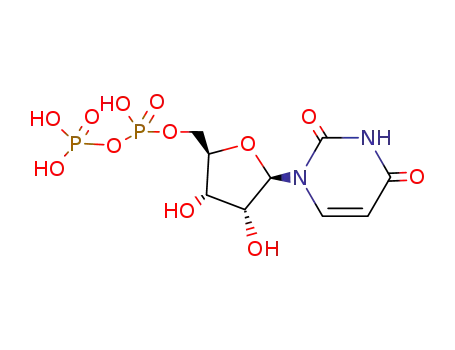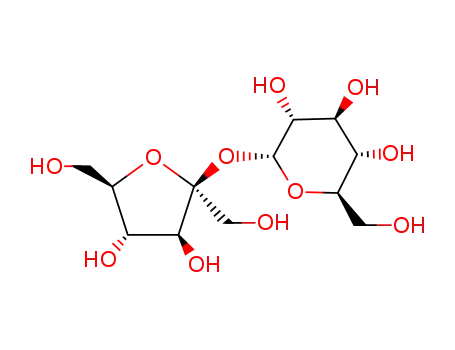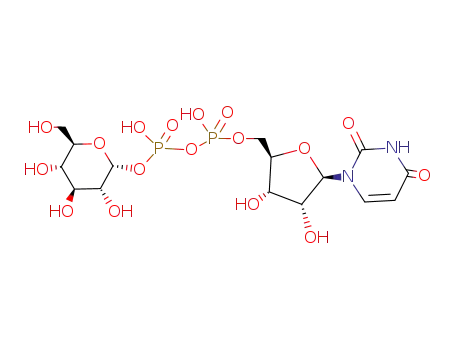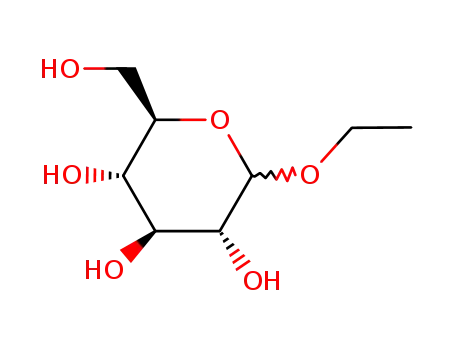

CasNo: 57-48-7
MF: C6H12O6
Appearance: Highly hygroscopic white odorless crystal or crystalline powder
|
History of fructose consumption |
Before the development of the sugar industry, free fructose was found in relatively few foods.[11] Relatively few unprocessed foods contain any significant amounts of free fructose monosaccharide. Historically, these foods have been relatively hard to obtain and they typically contain fructose in conjunction with glucose and/or fibre, which has significant implications for the absorption and metabolism of the former[12, 13]. As a consequence, humans have historically had low dietary fructose intakes[11] |
|
Rise of fructose consumption |
Fructose consumption has been escalating over the past several decades and is believed to play a role in the rising epidemic of metabolic disorders[14]. Fructose is a simple monosaccharide that occurs naturally in fruit, though the two main sources of dietary fructose in the Western diet are sucrose (table sugar) and high-fructose corn syrup (HFCS)[14]. Sucrose is cleaved enzymatically during digestion to produce one fructose molecule and one glucose molecule. HFCS, on the contrary, contains free fructose and glucose in varying ratios. A popular type of HFCS that is used to sweeten beverages in the United States – HFCS-55 – contains 55% fructose, 42% glucose and 3% oligosaccharides[15]. The 1999–2004 data from the National Health and Nutrition Examination Survey (NHANES) show that the average daily intake of fructose in the United States is now approximately 49 g, which equates to 9.1% of total energy intake[16]. In comparison, the average daily intake of fructose during 1977–1978 was 37 g[16]. The highest consumers of fructose are 19–22-year-olds, largely due to excess consumption of sugar-sweetened beverages. Fructose consumption as a percentage of total energy intakes amongst male and female 19–22-year-olds in the 95th percentile is 17.5 and 17.9%, respectively[16]. |
|
Source of fructose |
It is located in fruits and honey. Main source is sucrose; the sucrose is hydrolyzed by sucrase into fructose and glucose. It is absorbed through facilitated diffusion and can be obtained from the portal blood to the liver where it is converted to glucose[17]. |
|
Biomedical importance of fructose |
This disease occurs due to deficiency of aldolase B. It has been observed in children, when children receive fructose in the diet. The vomiting and hypoglycemia is an important feature of this disease. Fructose 1 phosphate accumulates in the liver. Accumulation exhausts inorganic phosphate thereby inhibiting both glycogen phosphorylase and the synthesis of ATP. Inhibition of these reactions leads to hypoglycaemia. AMP also accumulates and metabolism leads to increased production of uric acid leading to hyperuricemia and gout[18]. Treatment of this disease includes avoiding substances containing fructose[19]. |
|
Fructose metabolism |
Sugar is present in fruits. Sucrose is hydrolyzed by sucrase to glucose and fructose. Dietary fructose is transferred from the intestine to the liver for metabolism. Fructose is converted to fructose 1 phosphate that further converted to acetone and glyceraldehyde dihydroxy, which is further converted to glyceraldehyde 3 phosphate to enter glycolysis. In the well-fed state, fructose is converted to glycogen[20] or triglycerides[21]. Hyperlipidemia, diabetes mellitus and obesity are interlinked. Consumption of fructose is increasing and is considered responsible for overweight. Several studies show that fructose increases incidence of obesity, dyslipidemia, insulin resistance, and hypertension. Metabolism of fructose takes place mainly in the liver and high fructose stream leads to accumulation of triglycerides in the liver (hepatic steatosis). This results in impairment of lipid metabolism and enhancement of expression of proinflammatory cytokine. Fructose alters glucose-induced expression of activated acetyl CoA carboxylase (ACC), pSer hormone sensitive lipase (pSerHSL) and adipose triglyceride lipase (ATGL) in HepG2 liver or primary liver cell cultures in vitro. This relates to the increased de novo synthesis of triglycerides in vitro and in vivo hepatic steatosis in fructose-fed versus glucose-and standard-diet mice fed. These studies provide new understanding of the mechanisms involved in fructose-mediated hepatic hypertriglyceridemia[22]. Rate of metabolism of fructose is more rapid than glucose, because triose formed from fructose 1-phosphate by pass phosphofructokinase, the primary rate-limiting step in glycolysis. Elevated levels of dietary fructose significantly elevate the rate of lipogenesis in the liver, because of the rapid production of acetyl-coenzyme A[23]. |
|
Fructose and diseases |
Fructose and hyperuricemia Increased intake of fructose is associated with hyperuricemia. Various studies indicate that that increased intake of sugar sweetened soft drinks and fructose is associated with risk of hyperuricemia in men[24]. Fructose and metabolic syndrome It is hypothesized that fructose induces metabolic syndrome in health individuals. Study was carried out to investigate the role of uric acid in the hypertensive response. In this study, allopurinol was given to patients to lower the serum uric acid level. Ultimately it was found that excessive intake of fructose can increase the blood pressure and is responsible of metabolic syndrome but the lowering of serum uric acid level by allopurinol prevents the increase in mean arterial blood pressure[25]. Fructose and obesity Fructose is almost similar to glucose because they are isomers to each other. Difference is in their metabolic pathway due to its almost complete hepatic extraction and rapid hepatic conversion into glucose, glycogen, lactate, and fat. In initial period when science was not so progressed, the diabetics patients were using fructose due to its low glycemic index. It has been observed now that obesity, diabetes mellitus, insulin resistance and hypertension are associated with chronic consumption of fructose. Dyslipidemia and impairment in hepatic insulin resistance are also due to increase intake of fructose in the diet. Adverse metabolic effects of fructose are responsible for hepatic de novo lipogenesis, hyperuricemia, oxidative stress and lipotoxicity. Epidemiological studies show that obesity, metabolic and cardiovascular disorders are also due to consumption of sweetened beverages (containing either sucrose or a mixture of glucose and fructose). Adverse metabolic effects of fructose are usually on high consumption and there is lack of evidence of adverse effect on moderate consumption of fructose. Study shows that free fructose is more dangerous than consumption of fructose consumed with sucrose[26]. Fructose and hypertension The rise in fructose intake has been paralleled by a rise in hypertension. A study of the US population during 2007–2008 found that 29% of adults were hypertensive, compared to 11–13% in 1939 and 24% during 1988–1994[27,28]. Epidemiological studies have hinted at a link between fructose consumption and hypertension. Jalal et al.[29] reported that excess dietary fructose (>74 g/day) in the form of added sugar was associated with higher blood pressure (BP) values in US adults who did not have a history of hypertension. Similarly, a study of 4867 adolescents found that SBP rose by 2mmHg from the lowest to the highest category of sugar-sweetened beverage intake[30]. In a prospective study of US adults, Chen et al.[31] found that drinking one less sugar-sweetened beverage per day was associated with a 1.8mmHg reduction in SBP and a 1.1mmHg reduction in DBP over 18 months. |
|
History |
Despite this ubiquity, fructose remained a noncommercial product until the 1980s because of the expense involved in its isolation and the care required for its handling. The development of technologies for preparing fructose from glucose in the isomerized mixture led to a greater availability of pure, crystalline fructose in the 1970s. However, the price for pure fructose was high enough in 1981 that the product was not competitive with sucrose and corn syrups as a commercial sweetener. With the entry of corn wet-milling companies into the crystalline fructose market in the late 1980s, raw material economies and enlarged manufacturing scale led to a nearly 10-fold production increase within a five-year period, making fructose prices competitive with other sweeteners for specific applications. |
|
Production Methods |
Fructose, a monosaccharide sugar, occurs naturally in honey and a large number of fruits. It may be prepared from inulin, dextrose, or sucrose by a number of methods. Commercially, fructose is mainly manufactured by crystallization from high-fructose syrup derived from hydrolyzed and isomerized cereal starch or cane and beet sugar. |
|
Manufacturing Process |
200 gal of medium containing 2% sucrose, 2% corn steep liquor solids, 0.1% potassium dihydrogen phosphate, and traces of mineral salts, was inoculated with Leuconostoc mesenteroides NRRL B-512 and incubated at 25°C. During growth, alkali was added automatically as needed to maintain the pH between 6.6 and 7.0. Fermentation was completed in 11 hours and the culture was immediately adjusted to pH 5 to maintain enzyme stability. Bacterial cells were removed by filtration and yielded a culture filtrate containing 40 dextransucrase units per ml, where one unit is the amount of dextransucrase which will convert 1 mg of sucrose to dextran, as determined by the amount of fructose liberated, measured as reducing power in 1 hour. 10 gal of the above culture filtrate was diluted to 40 gal with water, 33.3 lb of sucrose was added to give a 10% solution, and toluene was added as a preservative. Dextran synthesis was complete before 22 hours, and dextran was harvested at 24 hours by the addition of alcohol to be 40% on a volume basis. The alcoholic supernatant liquor obtained was evaporated to recover the alcohol and yielded a thick syrup, rich in fructose. Analysis showed the syrup to contain 50.1% of reducing sugar, calculated as monosaccharide and to have an optical rotation equivalent to 35.1% fructose. The percentages are expressed on a weight/volume basis, and reducing power was determined by the method of Somogyi, Jour. Biol. Chem. 160, 61 (1945). A portion (4.3 liters) of the syrup was cooled to 3°C. One-tenth of this volume was treated by slow regular addition, with rapid stirring, of a 6-fold volume of cold 20% calcium oxide suspension. A second portion was treated in the same manner, and this process was continued until the entire volume of crude fructose syrup had been utilized. The reaction mixture became thick with a white sediment containing a profusion of microscopic needlelike crystals of calcium levulate. Stirring was continued for 2 hours.The calcium levulate precipitate was separated from the reaction mixture by filtration and washed with cold water. The precipitate was suspended in water to give a thick slurry, and solid carbon dioxide added until the solution was colorless to phenolphthalein. A heavy precipitate of calcium carbonate was now present and free fructose remained in the solution. The calcium carbonate precipitate was removed by filtration, and the filtered solution was found to contain 1,436 g of fructose as determined by optical rotation. A small amount of calcium bicarbonate was present as an impurity in solution and was removed by the addition of oxalic acid solution until a test for both calcium and oxalic acid was negative. The insoluble calcium oxalate precipitate was removed by filtration. The fructose solution was decolorized by treatment with activated charcoal and concentrated under vacuum to a thick syrup. Two volumes of hot 95% ethyl alcohol were added, and the solution was heated to a boil and filtered to remove a small amount of insoluble material. After cooling, three volumes of ethyl ether were added, and the solution was allowed to stand overnight in the refrigerator. Fructose separated from the solution as a thick syrup and was separated from the supernatant liquid by decantation. The syrup was seeded with fructose crystals and after standing in the cold for 4 days, became a crystalline mass of fructose. The yield of dry fructose was 928 g. Additional recoverable quantities of fructose are present in the crystallization mother liquor. In continuous operation this mother liquor may be recycled for addition to subsequent quantities of fructose syrup and the combined liquors crystallized as in the foregoing example. |
|
Therapeutic Function |
Fluid replenisher, Pharmaceutic aid |
|
Pharmaceutical Applications |
Fructose is used in tablets, syrups, and solutions as a flavoring and sweetening agent. The sweetness-response profile of fructose is perceived in the mouth more rapidly than that of sucrose and dextrose, which may account for the ability of fructose to enhance syrup or tablet fruit flavors and mask certain unpleasant vitamin or mineral ‘off-flavors’. The increased solubility of fructose in comparison to sucrose is advantageous in syrup or solution formulations that must be refrigerated, since settling or crystallization of ingredients is retarded. Similarly, the greater solubility and hygroscopicity of fructose over sucrose and dextrose helps to avoid ‘cap-locking’ (sugar crystallization around the bottle cap) in elixir preparations. Fructose also has greater solubility in ethanol (95%) and is therefore used to sweeten alcoholic formulations. The water activity of a sweetener influences product microbial stability and freshness. Fructose has a lower water activity and a higher osmotic pressure than sucrose. Syrup formulations may be made at lower dry-substance levels than sugar syrups without compromising shelf-life stability. It may be necessary to include a thickener or gelling agent to match the texture or viscosity of the sugar-equivalent formulation. Fructose is sweeter than the sugar alcohols mannitol and sorbitol, which are commonly used as tableting excipients. Although fructose is effective at masking unpleasant flavors in tablet formulations, tablets of satisfactory hardness and friability can only be produced by direct compression if tablet presses are operated at relatively slow speeds. However, by the combination of crystalline fructose with tablet-grade sorbitol in a 3 : 1 ratio, satisfactory direct-compression characteristics can be achieved. A directly compressible grade of fructose, containing a small amount of starch (Advantose FS 95, SPI Pharma) is also commercially available. Pregranulation of fructose with 3.5% povidone also produces a satisfactory tablet excipient.(1) The added sweetness of fructose may also be used to advantage by coating the surface of chewable tablets, lozenges, or medicinal gums with powdered fructose. The coprecipitation of fructose with hydrophobic drugs such as digoxin has been shown to enhance the dissolution profile of such drugs. Fructose apparently acts as a water-soluble carrier upon coprecipitation, thereby allowing hydrophobic drugs to be more readily wetted. |
|
Biochem/physiol Actions |
D-(?)-Fructose can enhance mood and gastrointestinal disturbances in fructose malabsorbers. It also possess metabolic and endocrine impact that shows that increased consumption of fructose is a contributing factor in the development of obesity and the accompanying metabolic abnormalities observed in the insulin resistance syndrome. |
|
Safety |
Although it is absorbed more slowly than dextrose from the gastrointestinal tract, fructose is metabolized more rapidly. Metabolism of fructose occurs mainly in the liver, where it is converted partially to dextrose and the metabolites lactic acid and pyruvic acid. Entry into the liver and subsequent phosphorylation is insulinindependent. Further metabolism occurs by way of a variety of metabolic pathways. In healthy and well regulated diabetics, glycogenesis (glucose stored as glycogen) predominates. Excessive oral fructose consumption (>75 g daily) in the absence of dietary dextrose in any form (e.g. sucrose, starch, dextrin, etc.) may cause malabsorption in susceptible individuals, which may result in flatulence, abdominal pain, and diarrhea. Except in patients with hereditary fructose intolerance, there is no evidence to indicate that oral fructose intake at current levels is a risk factor in any particular disease, other than dental caries. |
|
storage |
Fructose is hygroscopic and absorbs significant amounts of moisture at relative humidities greater than 60%. Goods stored in the original sealed packaging at temperatures below 25°C and a relative humidity of less than 60% can be expected to retain stability for at least 12 months. Aqueous solutions are most stable at pH 3–4 and temperatures of 4–70°C; they may be sterilized by autoclaving. |
|
Purification Methods |
Dissolve D(-)-fructose in an equal weight of water (charcoal, previously washed with water to remove any soluble material), filter and evaporate under reduced pressure at 45-50o to give a syrup containing 90% of fructose. After cooling to 40o, the syrup is seeded and kept at this temperature for 20-30hours with occasional stirring. The crystals are removed by centrifugation, washed with a small quantity of water and dried to constant weight under a vacuum over conc H2SO4. For higher purity, this material is recrystallised from 50% aqueous ethanol [Tsuzuki et al. J Am Chem Soc 72 1071 1950]. [Beilstein 31 H 321, 1 IV 4401.] |
|
Incompatibilities |
Incompatible with strong acids or alkalis, forming a brown coloration. In the aldehyde form, fructose can react with amines, amino acids, peptides, and proteins. Fructose may cause browning of tablets containing amines. |
|
Regulatory Status |
Included in the FDA Inactive Ingredients Database (oral solutions, syrup, and suspensions; rectal preparations; intravenous infusions). Included in the Canadian List of Acceptable Non-medicinal Ingredients. |
|
General Description |
D(-)-Fructose, also known as levulose or fruit sugar, is a monosaccharide that exhibits high selectivity in binding interactions due to its stable pyranose ester form and spatial compatibility with boronic acid-based receptors. Its recognition in aqueous solutions can be enhanced through specific fluorescent sensor systems, which demonstrate significantly greater responsiveness to D-fructose compared to other monosaccharides like D-glucose, highlighting its unique structural and chemical properties. |
|
Definition |
A sugar found in fruit juices, honey, and cane sugar. It is a ketohexose, existing in a pyranose form when free. In combination (e.g. in sucrose) it exists in the furanose form. |
InChI:InChI=1/C6H12O6/c7-1-3-4(9)5(10)6(11,2-8)12-3/h3-5,7-11H,1-2H2/t3-,4-,5+,6?/m1/s1
The conversion of carbohydrates into lac...
Lewis acid catalyzed isomerization of gl...
5-Hydroxymethyl furfural (HMF) is a plat...
(NH4)5H6PV8Mo4O40 supported on hydroxyap...

UDP


Sucrose


UDP-glucose


D-Fructose
| Conditions | Yield |
|---|---|
|
With
recombinant sucrose synthase from soybean Glycine max; potassium chloride; magnesium chloride;
In
dimethyl sulfoxide;
at 30 ℃;
pH=6.5;
Enzymatic reaction;
|

ethanol


Sucrose


D-Fructose


ethyl D-glucopyranoside


ethyl D-fructofuranoside
| Conditions | Yield |
|---|---|
|
With
aluminium(III) chloride hexahydrate;
In
water;
at 80 ℃;
for 36h;
Reflux;
|

pyridine

D-Mannose

D-glucose

quinoline

Sucrose

1,2,3,4,5-Penta-O-trimethylsilyl-L-sorbopyranose

5-(methoxymethyl)-2-furaldehyde

levulinic acid methyl ester